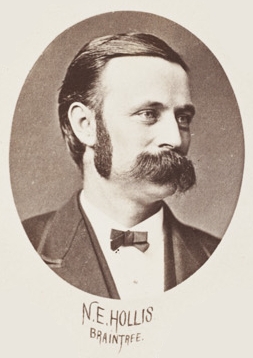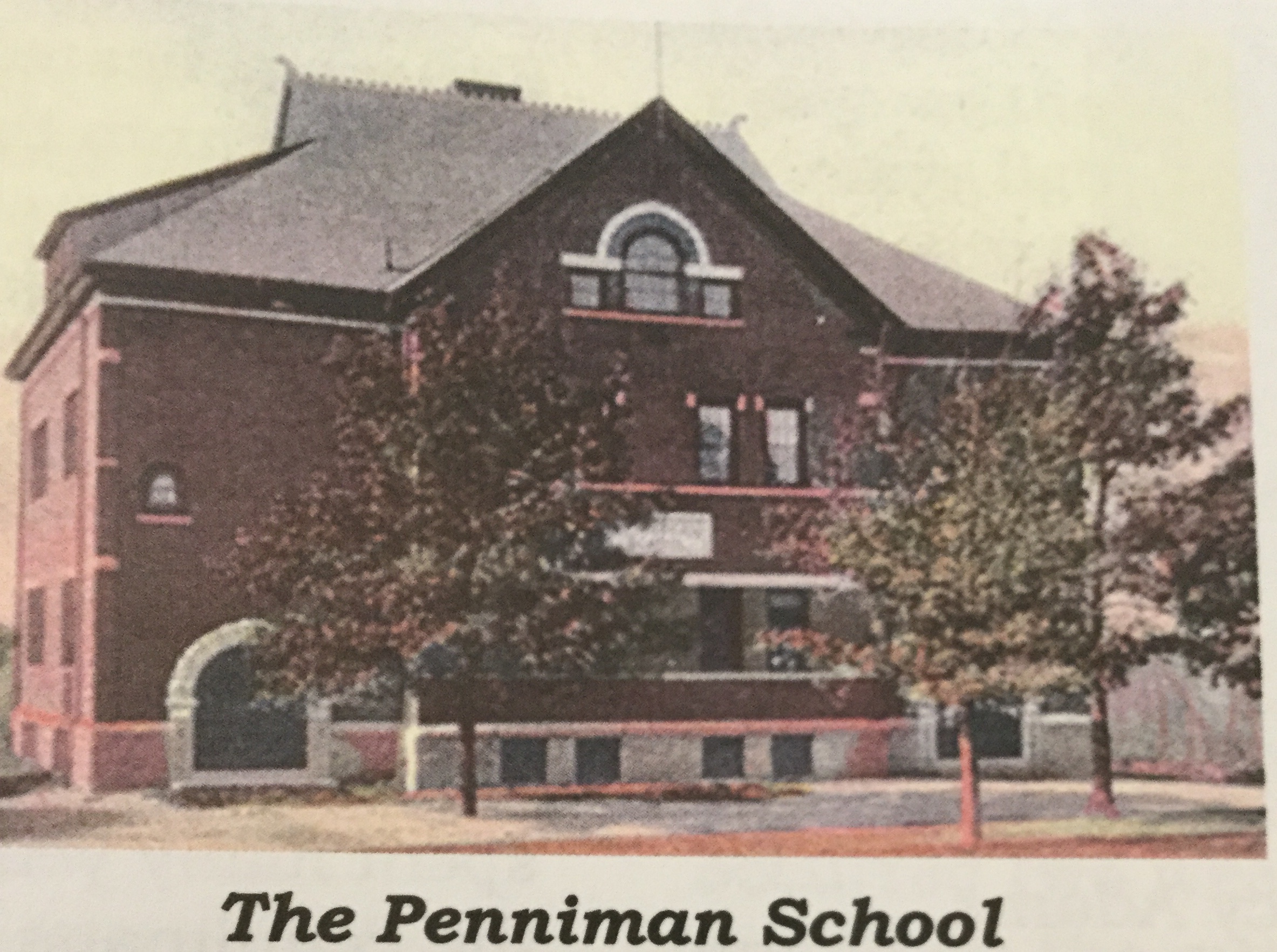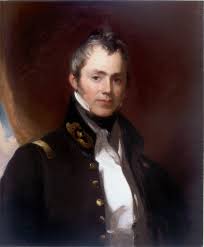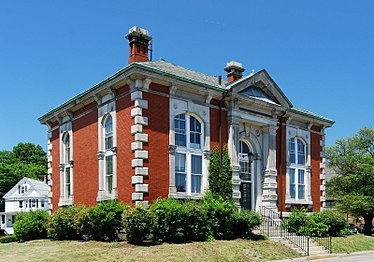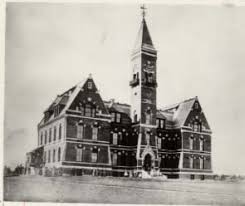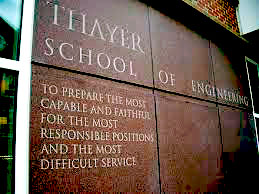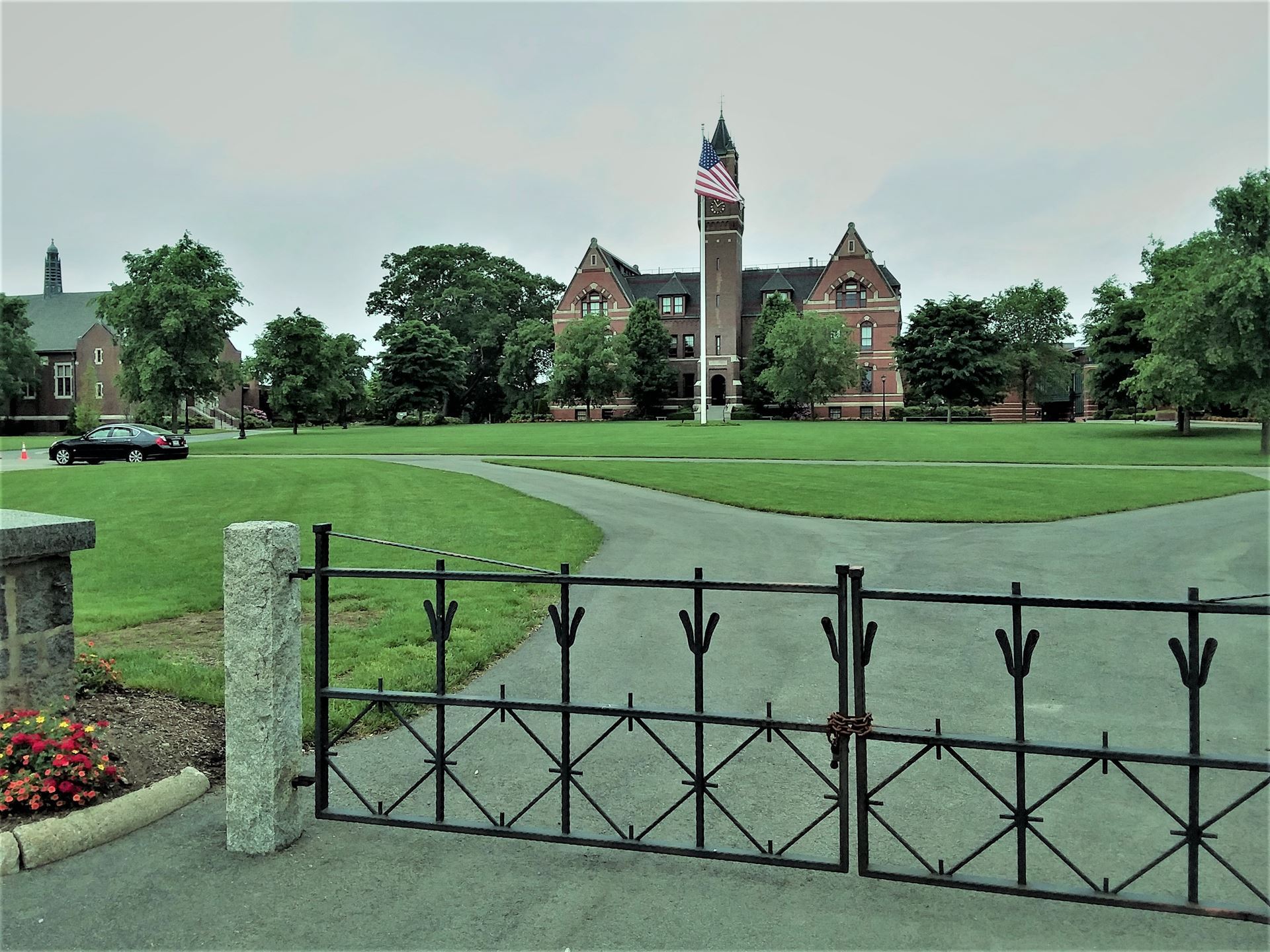
BRAINTREE HISTORICAL SOCIETY
- Home
- Lantern Online
- Lantern-Online October 2018

OCTOBER 2018
The Town of Braintree owes a debt of gratitudeto Norton Hollis
By Rose BarrettIt was back in the 1980’s that I started noticing the many items brought home from school by my children stamped “Paid for by the Hollis Fund”. This was noted on books brought home from school (it included some school enrichment programs as well) and it was noted on books from our local library. My curiosity got the best of me and I had to find out more about the Hollis Fund.
It was while researching this fund that I learned of a very generous and caring citizen of Braintree and one who loved his town and the people in it. He was extremely generous and it only seems fair that those benefiting all these years know of his great foresight.
Mr. Norton Eugene Hollis was born in Braintree in 1840. He was the son of David Norton Hollis and Mary Penniman Hollis, both descendants of early Braintree settlers. At the age of 17 he began driving a meat wagon and, like his father and his grandfather before him, spent his lifetime in the meat business. He amassed a fortune of over a million dollars through the years and eventually became the head of the Swifts Meat Agency in Boston and owner of the Hub’s famed Quincy House.
Though records show his father once served as a selectman, Norton Eugene Hollis never held a public office. He did, however, possess a love for his native town and remained a generous and public spirited citizen. In fact, he is one of Braintree’s greatest benefactors.
At the turn of the century, when Braintree was struggling to keep up with the school systems of surrounding towns, Mr. Hollis was in a position to help. He donated land to the town in memory of his mother Mary Penniman. On this land the town’s first brick school building,The Penniman School was built. (no longer standing). He also sold to the town, for less than its value, the land for the Hollis Field and Stadium, which for many years was the town’s finest athletic facility. The land was donated “in consideration of its being forever used as a public playground.” The town’s first high school “Braintree High School” was also built on property nearby, property again sold to the town for a small fee by Mr. Hollis. The High School was built in 1858 and located at 550 Washington St. This building still stands and is now the Landmark Condominiums.
In 1916, seven years before his death, Mr. Hollis made out his Will which would provide funds for the youth of Braintree for generations. He had amassed a large fortune and his Will stated that upon the death of his two children, provided they died without heirs, his fortune would revert to the town in the form of three trust funds. Mr. Hollis died in 1923.
The “N. E. Hollis Park and Playground Fund” was set up with a donation of $100,000 and the income generated would be spent on the parks and playgrounds of Braintree and for the upkeep and care of the fountain in Storrs Square. A second trust was the “Lucia E. Hollis and E. Stanwood Hollis Fund”. Money donated for that was $10,000 with the income to be spent yearly for the purchase of books for the public library of the Town of Braintree.The third and largest of the funds was the “Annie Storrs (Veazie) and the Norton Eugene Hollis School Fund.” It consisted of the balance of his estate amounting to $1,273,000.00. It was to be invested and the interest expended by the town for the benefit of the public schools for the town.
Eight years after the death of his father Mr. E. Stanwood Hollis died in 1931. Mrs. Lucia Hollis Farrington died in 1958. Both died without children. It was in 1959 that the allotted funds became available to the town and the town has benefitted ever since.
At the completion of the 2018/2019 school year it will have been 60 years of funds provided to the Braintree Public Schools, Braintree's Thayer Public Library and Braintree’s playgrounds, all thanks to the generosity and foresight of Mr. Norton Eugene Hollis.
For the past few months, we have been sharing the history of the Braintree Public Schools. We have seen the generosity and foresight of others and followed the building blocks leading to the successful school system in place today. We complete the series on our schools with a story previously published in the September 2011 issue of the printed Lantern. In “The General’s Will” we witness the vision of General Sylvanus Thayer resulting in the building of Thayer Academy.
General Sylvanus Thayer
The General’s Will
We are all familiar with the generosity of General Sylvanus Thayer to the Town of Braintree; his gifts gave us both Thayer Academy and our first Thayer Public Library.He was also a benefactor of his alma mater, DartmouthCollege, in the endowment of the School of Engineering there. In his will, the General has provisions for all of these institutions but the will has many other interesting features.
First, there is his introduction: “I, Sylvanus Thayer, a Brigadier General in the military service of the United States, at present at Braintree, in the county of Norfolk, and the Commonwealth of Massachusetts.”Next there are six specific bequests of varying amounts: to his nephew Jonathan B. Moulton; To Nathaniel Thayer Moulton; to Emily, Fanny, and Mellona, daughters of his deceased niece, Mellona Butterfield; to the Reverend George Augustine Thayer of Boston; to the American Academy of Arts and Sciences; and to the American Philosophical Society located in Philadelphia. His nephew Jonathan Moulton was also to receive “all my wearing apparel and military equipments.”
The will continues with a list of annuities left to his sisters, Abigail F. Davis and Livia A. Wild with very specific instructions as to how these should be paid. An interesting paragraph follows: “It is my will that each of the annuities herein given for the benefit of my sisters and nieces respectively, may be paid to her who may be entitled thereto, and without the interference of any husband or being subject to his debts, engagements or control.”
He then describes various parcels of land to be conveyed to his trustees with a proviso for his sister Livia D. Wild to be allowed to occupy one parcel and to receive the residue of income from the same. Livia was also the recipient of all his household goods and furniture and all of his farm tools and implements. His books and maps were left to his friends Asa French and George Augustine Thayer. They were requested to dispose of the same in a manner “as I may direct in and by any letter or memorandum in writing which I may make for that purpose.”
The General states that he is “desirous of promoting the cause of education” and “benefiting the town of Braintree, the place of my birth” and so he names certain trustees to carry out his wishes, after securing payment of the annuities, by managing and investing his property to accomplish certain things. He includes detailed instructions about the purchase of land in Braintree and the erection of a suitable edifice or edifices for an academy “in which young persons of the male sex (or both male and female if my trustees deem it expedient) shall be educated.” For this purpose the trustees are to appropriate a sum not to exceed $60,000. This is to be “in addition to the sum of $20,000 to be furnished by the town of Braintree or by individuals.” If the town or individuals did not furnish their share, the trustees might locate the academy in Quincy or Randolph.
The will continues for another eight pages with detailed instructions about the management of the academy, the terms and replacement of the trustees, and the kind of investments acceptable. The last page is a codicil regarding a new building for a library at Dartmouth College. Again, there are specific requirements to be met before the trustees are to pay out any funds.
Sylvanus Thayer went from a humble farmhouse in Braintree to become a celebrated officer in the United States Army, but he never had the desire to become a rich man. Due to the custom of the times he amassed a fortune in commissions on his work as chief engineer on construction projects, building fortifications along the East Coast. His investments were largely in real estate, and his will describes many properties to be added to his trust on his death. He spent his last years in Braintree at the home of his sister Livia, managing the small farm and planning the academy that is named for him.
The General knew what he wanted to accomplish and tried to ensure, to the best of his ability, that his wishes were carried out.
(This article was first published in the September 2011 Lantern. The author was not noted.)
The Impressive result of The General’s Will
If one were to Google Thayer Academy, Braintree and check out Wikipedia they would find the following. All thanks to the generosity of Gen. Sylvanus Thayer.
Thayer Academy (TA) is a prestigious private, co-educational, college-preparatory day school located in Braintree, Massachusetts, United States. The academy, conceived in 1871 at the bequest of General Sylvanus Thayer, known as the father of the United States Military Academy at West Point, and founder of the Thayer School of Engineering at Dartmouth College, was established in 1877. Thayer annually enrolls approximately 470 students in the Upper School (grades 9-12) and an additional 220 students in the Middle school (grades 6-8) and grade 5 commencing in the 2018-19 academic year. The 34acre (14ha) campus is situated in the heart of Braintree and consists of eight buildings and 54 classrooms. Students are drawn primarily from Boston’s Metro West and South Shore communities.
History
General Thayer, born in Braintree, Massachusetts, graduated as valedictorian from both Dartmouth College and the United States Military Academy at West Point, New York. General Thayer was dedicated to hard work, and at the age or 17, he taught in the local schools of Hanover, New Hampshire to earn money to pay for college – an early sign of the importance he attached to teaching and education. He was Superintendent of the Military Academy at West Point from 1817-1833. General Thayer’s 1871 will provided for the creation of Thayer Academy, and on September 12, 1877, the Academy opened its doors to 30 students in what is now Main Building.
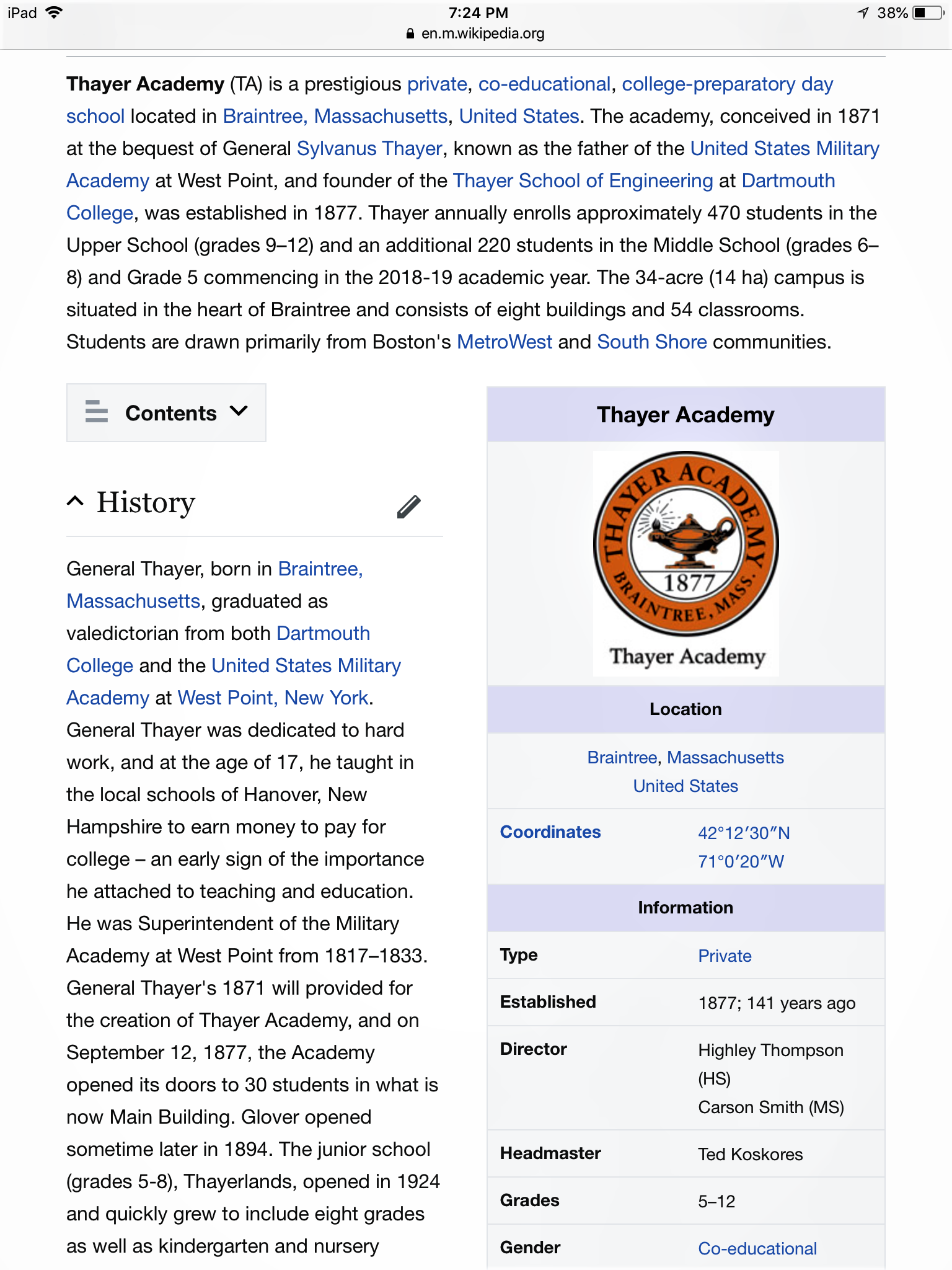
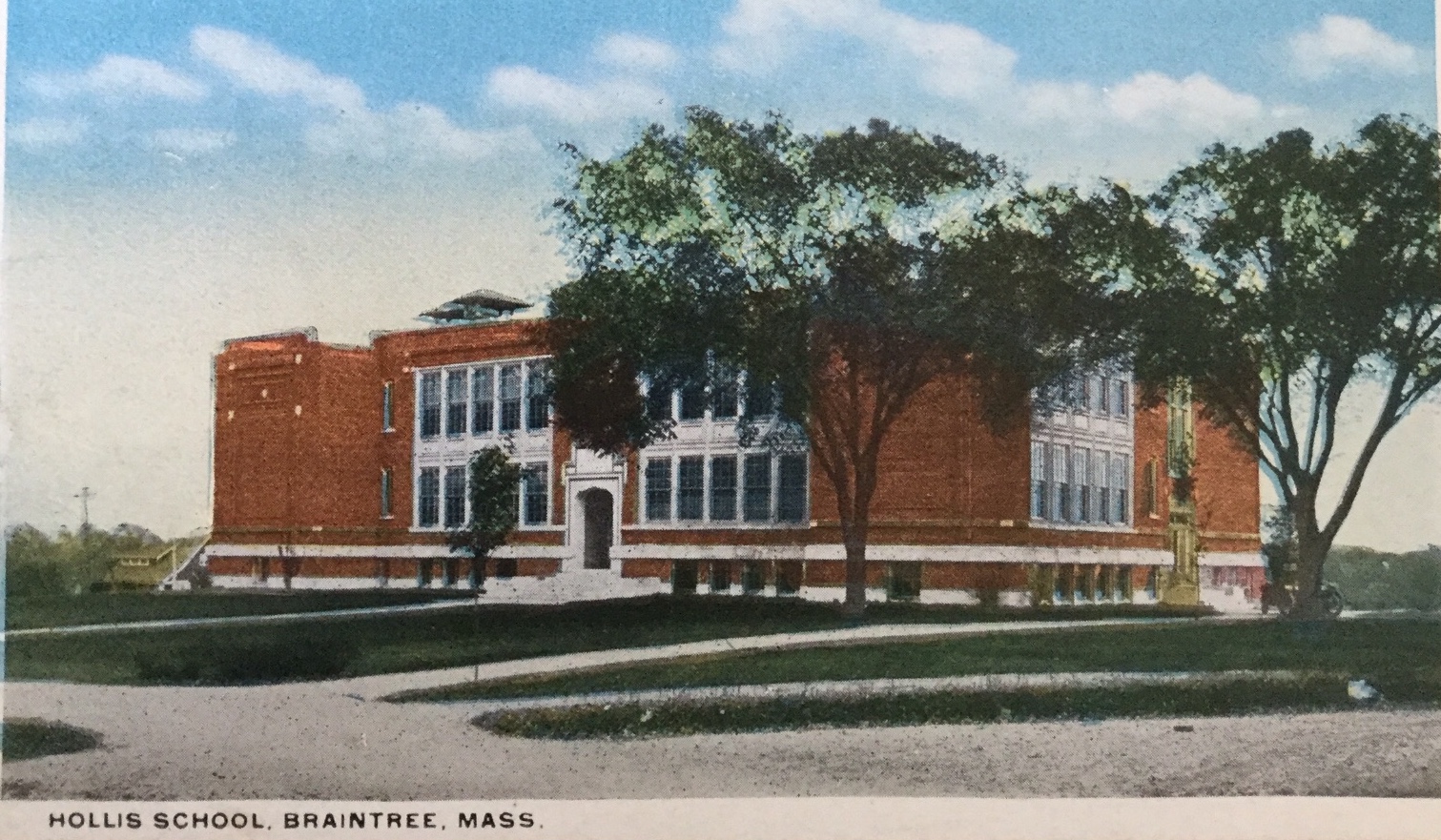
Postcard of The Hollis Elementary School built in 1912
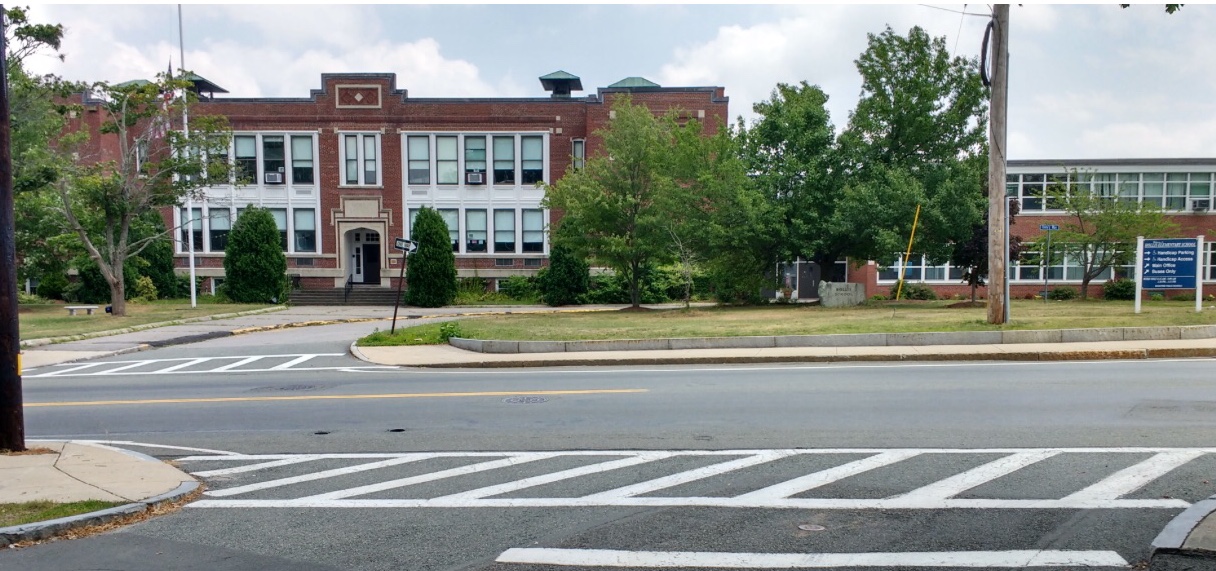
Picture of Hollis Elementary School as it appears now in 2018
